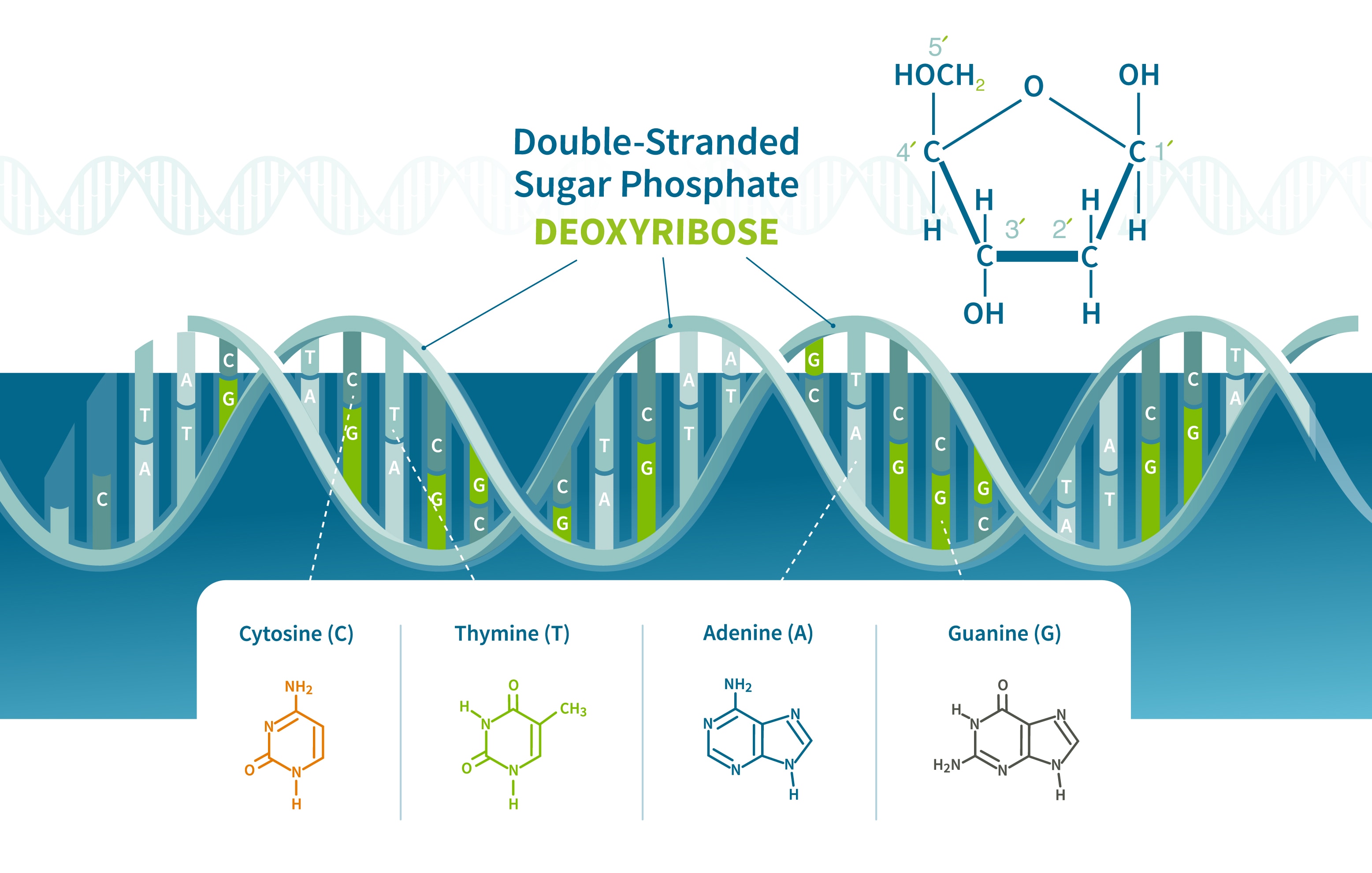DNA Sugar
When you hear the word sugar, you may think of the white table sugar which sweetens coffee or tea. But when it comes to DNA, the sugar involved is called deoxyribose.
Deoxyribose is one of the three components of nucleotides, the building blocks of DNA. Each nucleotide consists of a phosphate group, a nitrogenous base—adenine (A), thymine (T), cytosine (C), or guanine (G)—and deoxyribose.
DNA's sugar, deoxyribose, has five carbon atoms, which are connected to each other to form what looks like a ring. Four carbons plus an oxygen are part of the five-sided ring. The fifth carbon branches off the ring.
The carbons in the pentagon are numbered from 1'-4', starting with the carbon found to the right of the oxygen and moving clockwise. The sugar in DNA is called a deoxyribose because it doesn't have a hydroxyl group at the 2' position. Instead it just has a hydrogen.

What Is a Sugar-phosphate Backbone?
If you look at a DNA double helix, it resembles a twisted ladder. The 'sides' of the ladder (or strands of DNA) are known as the sugar-phosphate backbone. This backbone consists of alternating phosphate and sugar groups, with the sugar molecule of one nucleotide linking to the phosphate group of the adjacent nucleotide.
Connected to each sugar is a nitrogenous base. The rungs connecting the two sugar-phosphate strands are created by pairs of nitrogenous bases. These bases pair in very specific ways: A always pairs with T and G with C.
Sugar-phosphate Backbone Function
The sugar-phosphate backbone, as mentioned, is an important component of DNA's double helix structure. The structure of DNA is tied to its function. The pairing of the nitrogenous bases that are connected to the sugar-phosphate backbone play a key role in the ability of DNA to store and transfer genetic information. For example, the base pairing is critical to the processes of transcription and translation.
The sugar-phosphate backbone has a negative charge that allows DNA to easily dissolve in water and is also used by proteins that bind the DNA. These proteins often have positive areas that bind strongly to the negative charge of the phosphate groups. The DNA binding proteins perform important functions like copying the DNA (replication), controlling when, where and how much a gene gets read (transcription regulation), and much more.
While not as famous as the A's, T's, C's, and G's, DNA would not exist without its sugar-phosphate backbone. It holds the DNA together, allows it to dissolve in water, and is used by the cell for specific functions.